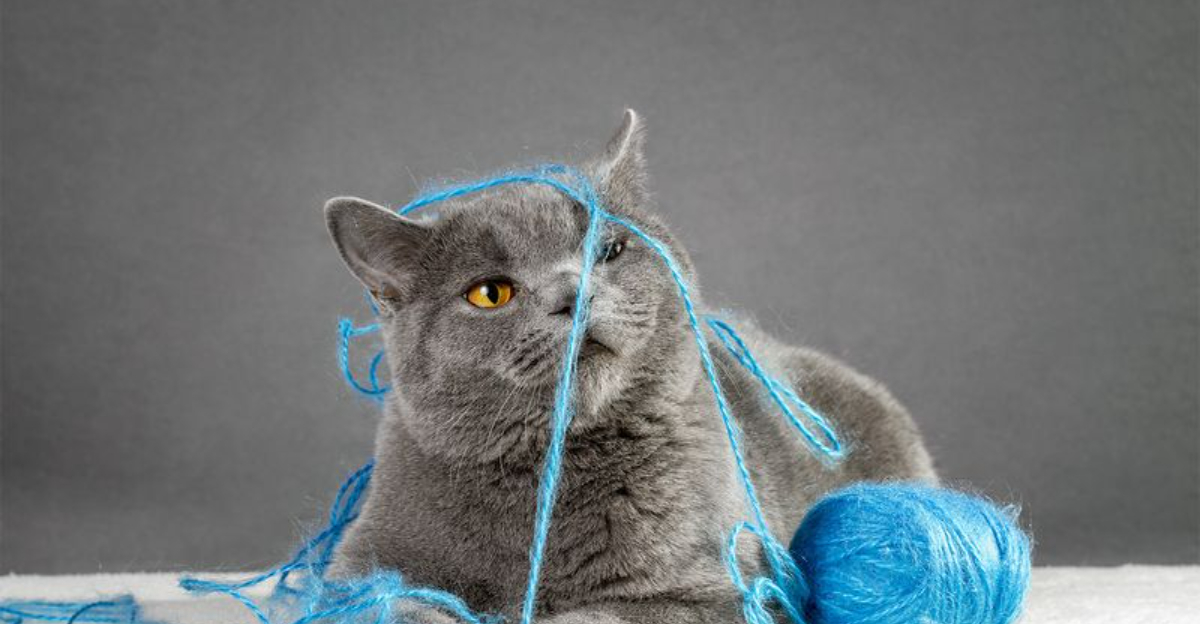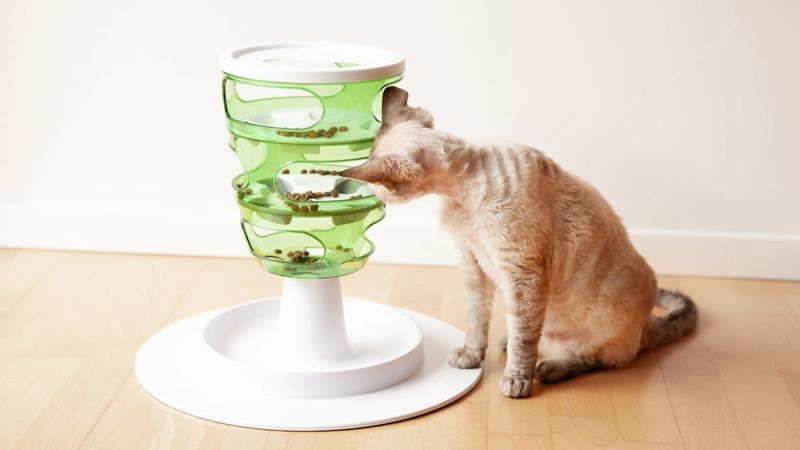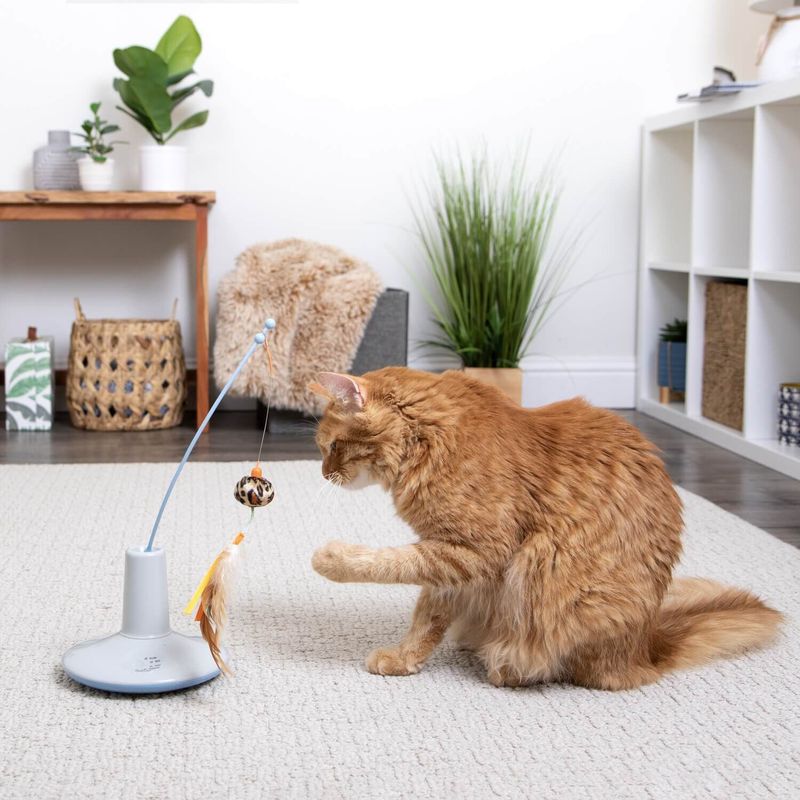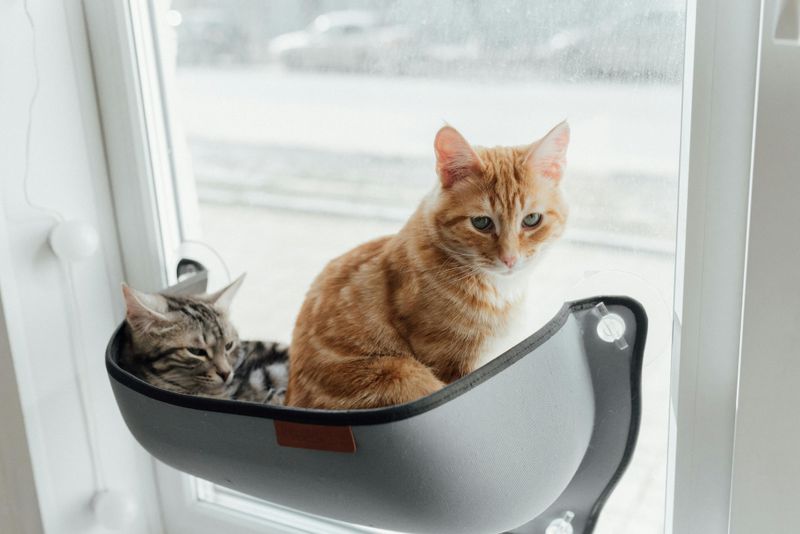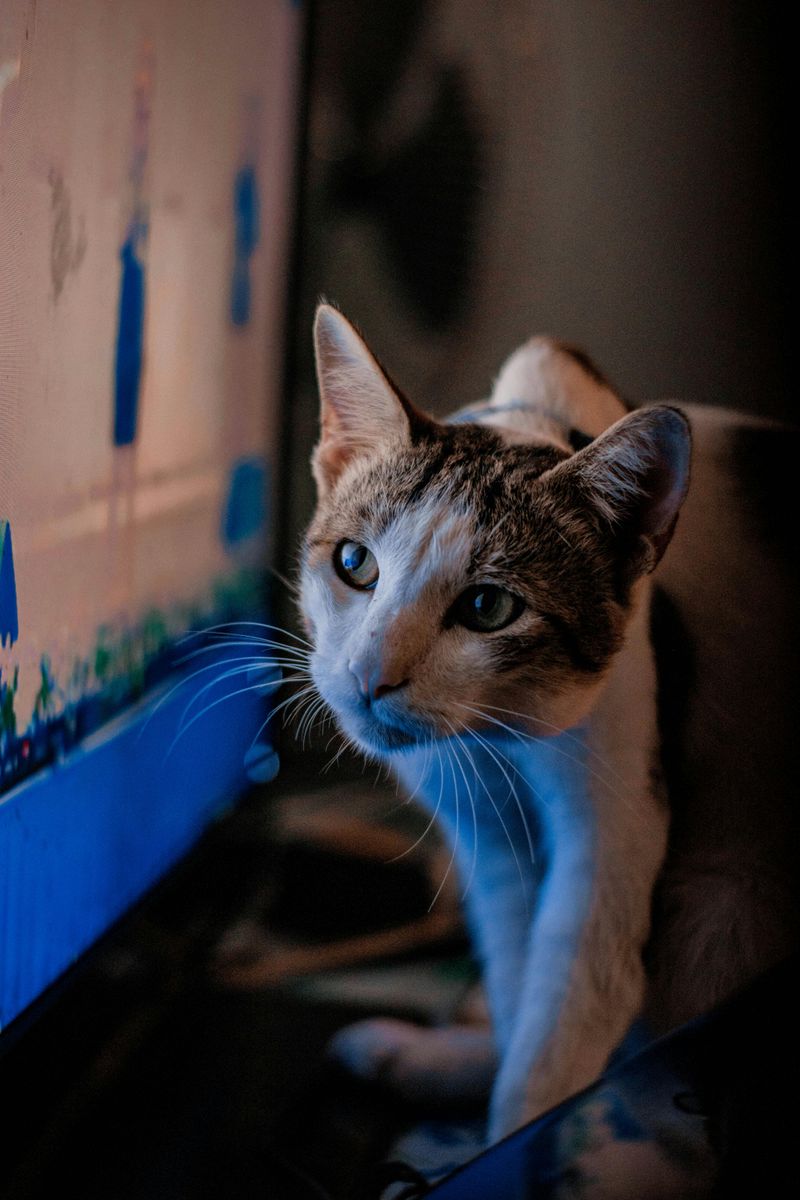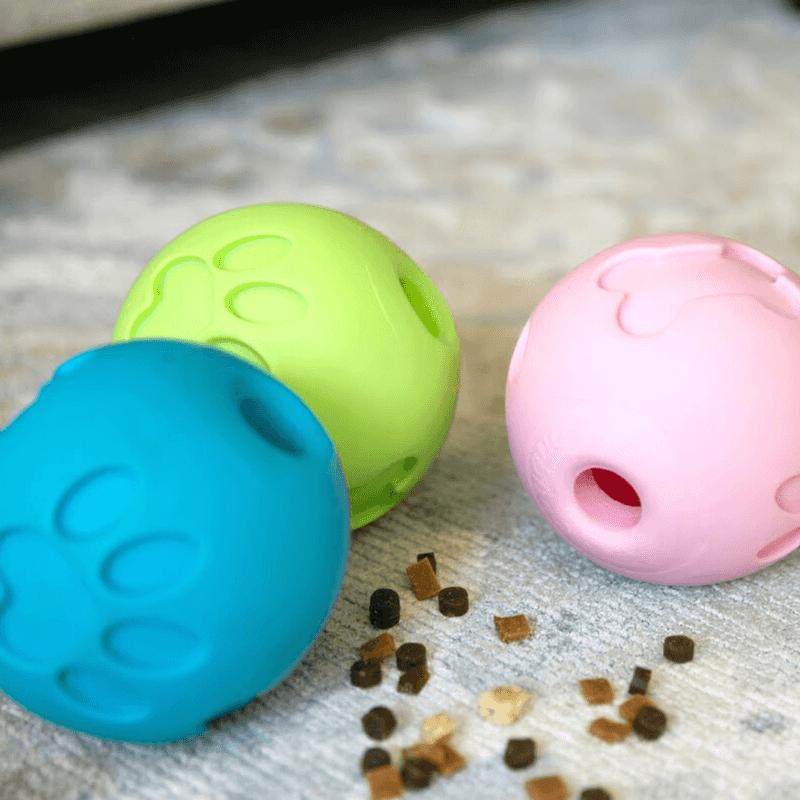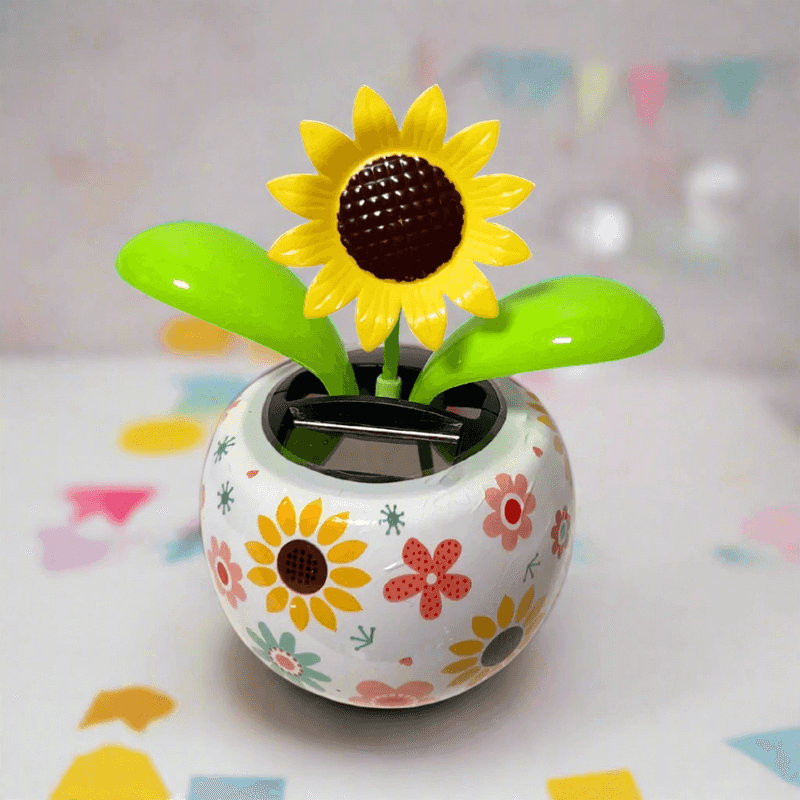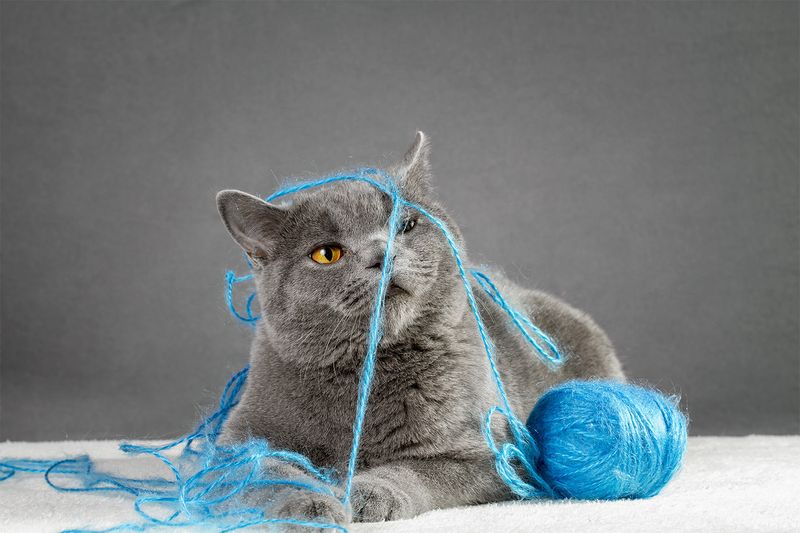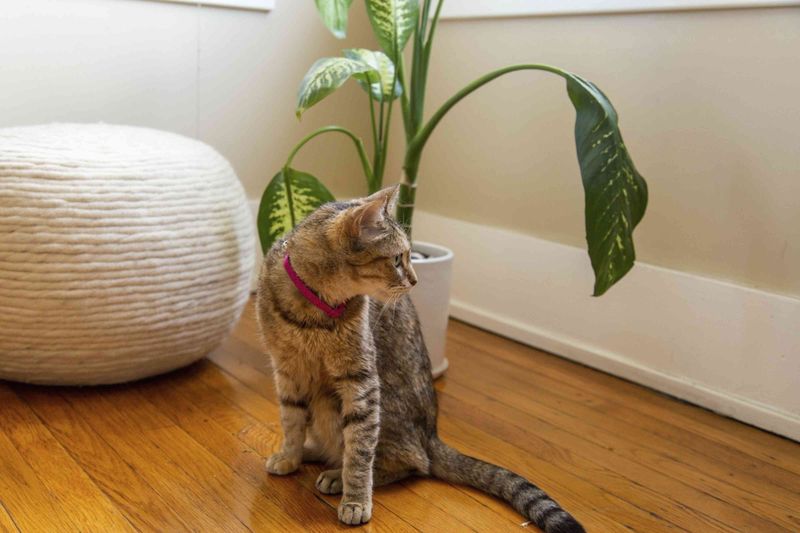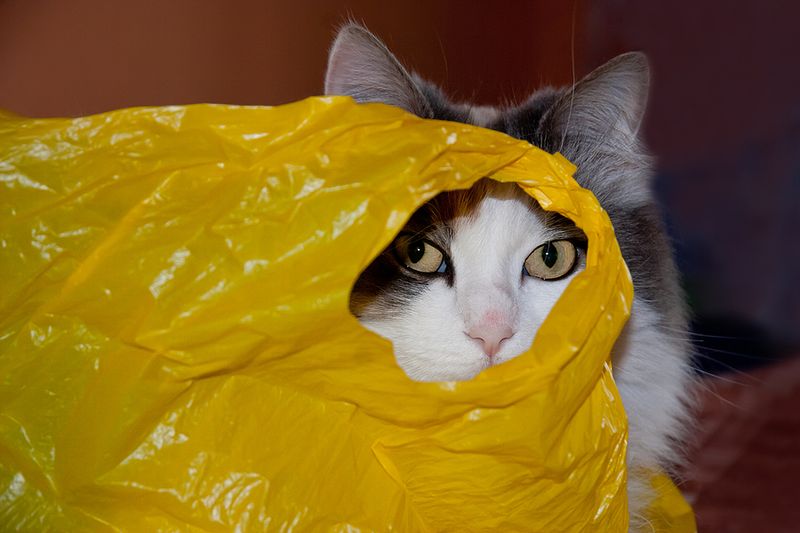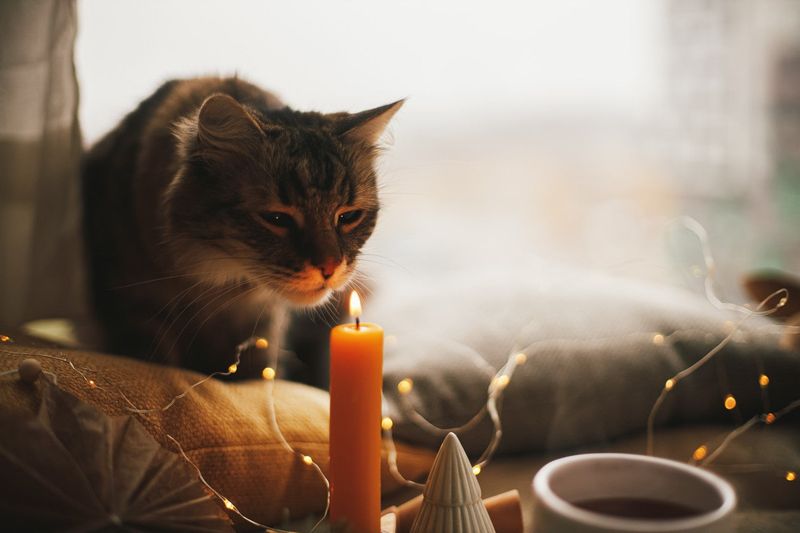📖 Table of Content:
Leaving your cat home alone can be a little nerve-wracking, especially when you know how curious and energetic they can be. While cats are famously independent, they still crave stimulation, entertainment, and a safe environment—especially during those long stretches when you’re away at work or running errands. Without proper distractions, boredom can quickly turn into mischief or stress.
The good news is, there are plenty of fun, affordable, and easy-to-set-up ways to keep your feline friend busy and mentally engaged even when you’re not around. From motion-activated toys to window-watching setups, these cat-approved ideas are more than just playthings—they’re tools that support your pet’s well-being. Keeping your cat stimulated not only prevents destructive behavior but also strengthens their confidence and reduces anxiety.
Just as important as providing entertainment is making sure your home is free from potential dangers. Many everyday items can pose a serious risk if your cat gets curious while you’re not there to supervise. That’s why this guide also highlights four commonly overlooked hazards to stash away before heading out. Pairing fun with safety? That’s a win for both you and your cat.
1. Interactive Puzzle Feeders
Cats thrive on mental challenges, and interactive puzzle feeders are a purr-fect way to engage their minds. These toys come in many shapes and difficulty levels, from sliding panels to ball mazes that dispense kibble. Not only do they slow down fast eaters, but they also simulate your cat’s natural hunting instincts. You can fill them with treats or dry food to make solo playtime rewarding. Even shy or older cats tend to warm up to puzzles that reward persistence. Most importantly, they provide a stimulating alternative to lounging around all day. By turning snack time into a mini-adventure, you keep your cat both physically active and mentally alert.
2. Battery-Operated Motion Toys
Nothing grabs a cat’s attention like a toy that moves unpredictably. Battery-powered toys like flopping fish or darting laser mice are designed to mimic prey, triggering your cat’s hunting instincts. With built-in timers and motion sensors, many of these toys activate only when your cat is nearby, preserving battery life and interest. These motion toys can be placed around the house for surprise fun throughout the day. Movement adds excitement, keeping your cat engaged far longer than a stationary toy. They’re especially useful for high-energy cats who need more stimulation than passive play provides. Having one or two of these in rotation can transform your living room into an indoor jungle.
3. Window Perch + Bird Feeder View
Setting up a window perch is like installing a live TV channel for your cat. With the added bonus of a bird feeder outside, you’ll create a naturally engaging and ever-changing scene. The movement of birds, squirrels, and even passing cars can keep a curious feline captivated for hours. Perches are available in suction-cup models, hammocks, or cushion-lined shelves to suit any home setup. Not only does this enrich their environment, but it also gives them a sunny spot to lounge and nap. Even indoor cats need the visual and sensory stimulation the outdoors provide. A well-placed perch offers entertainment, comfort, and a dash of natural sunlight all in one.
4. Cat TV (YouTube videos for cats)
Believe it or not, YouTube isn’t just for humans. There’s a whole genre of videos designed for cats featuring birds, mice, fish, and fluttering insects in motion. Playing these on your TV or tablet while you’re out gives your cat something to focus on besides shadows and dust particles. Some cats even paw at the screen or chirp at the movement, showing genuine engagement. You can loop these videos for hours to keep the content fresh and consistent. Even if your cat only watches intermittently, it breaks up their day with visual interest. It’s a simple setup with big enrichment payoffs—no subscriptions required.
5. Treat-Dispensing Balls
For food-motivated cats, treat-dispensing balls are an instant hit. As they bat, chase, and roll the ball around, small treats or kibble fall out, rewarding curiosity and movement. This encourages physical activity while offering tasty reinforcement. Unlike puzzle feeders, these move freely around your space, adding a dynamic element of surprise. They’re a great option for cats who enjoy solo play and need an outlet for their energy. Some versions allow you to adjust the difficulty level as your cat becomes more skilled. It’s both a game and a meal rolled into one—literally.
6. Solar-Powered Dancing Flowers
Sunlight-powered dancing flowers are a charming and surprisingly effective way to catch your cat’s attention. These little plastic flowers or animals sway and bounce when exposed to light, creating movement that intrigues curious felines. Without any batteries or noise, they offer low-maintenance visual stimulation that’s safe and consistent. Many cats are drawn to the gentle motion, batting at the leaves or simply watching them for entertainment. They can be placed near a sunny window, on a shelf, or anywhere light hits for maximum effect. Best of all, they don’t require your supervision—just a bit of daylight to do their thing. If you’re looking for a quirky, eco-friendly toy that keeps your cat visually engaged, this one’s a winner.
1. String, Yarn, and Hair Ties
Though they may look harmless, strings, yarn, and hair ties are some of the most dangerous objects for curious cats. Ingesting any of these can lead to choking, digestive blockages, or internal injury. Cats love the texture and motion of these objects, often batting or chewing them without realizing the risk. Even unattended play with string toys can end in a trip to the vet. It’s best to store these items in closed containers or drawers. If you use string-based toys, make sure they’re supervised only. When in doubt, remove them entirely from your cat’s reach while you’re away.
2. Toxic Plants
Many popular houseplants are toxic to cats, even in small doses. Lilies, aloe vera, pothos, and philodendrons are just a few common culprits. If your cat chews on or even brushes up against these plants, it could lead to vomiting, kidney failure, or worse. While they may look decorative, their hidden risks aren’t worth it. Always check if a plant is pet-safe before bringing it home. Better yet, opt for non-toxic varieties like spider plants, areca palms, or cat grass. Keeping toxic plants out of paw’s reach—or better, out of the house—adds an important layer of safety.
3. Plastic Bags or Packaging
Crispy, crinkly plastic may sound like fun to a cat, but it’s a suffocation and ingestion hazard. Cats may climb inside shopping bags or chew on plastic wraps, unaware of the danger. The handles of bags can get caught around their necks, causing panic or even injury. It only takes a moment of curiosity to result in a scary situation. Always dispose of or securely store plastic bags and packing materials. If you use them for storage, make sure they’re placed in closed cabinets. A safer alternative is providing paper bags (handle-free) for supervised play.
4. Candles and Diffusers
Even the most calming scents can turn dangerous when essential oils are involved. Many common diffusers contain oils that are toxic to cats, such as tea tree, eucalyptus, and citrus blends. Inhaling these particles or brushing against open diffusers can cause skin irritation, nausea, or worse. Candles are equally risky, especially if your cat jumps onto surfaces while you’re away. A tipped candle could lead to burns or fire. Always blow out flames and unplug diffusers before leaving the house. When it comes to scents and ambiance, safety should come first.
